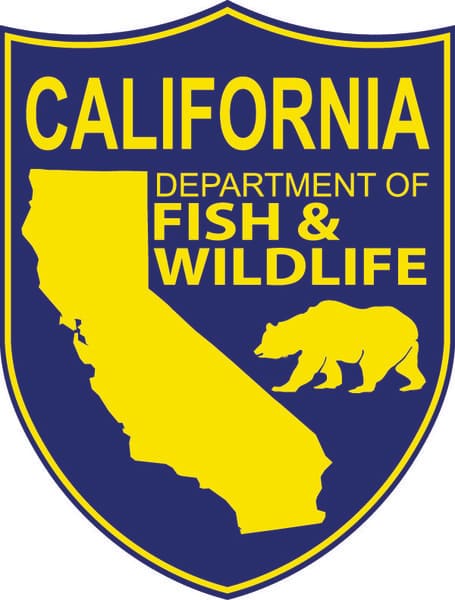California Outdoors Q&As: Before Fishing for Sturgeon, Check Out the New Regs

Before Fishing for Sturgeon, Check Out the New Regs
Question: What are some of the new sturgeon fishing regulation changes that went into effect Jan. 1? I’ve heard measurement methods, size limits and methods of take are a few of them. What’s new? (Anonymous)
Answer: Sturgeon must now be measured by fork length, the straight-line distance from the tip of the head to the center of the tail. Tip of the head shall be the most anterior point on the fish with the mouth closed and the fish lying flat on its side (California Code of Regulations, Title 14, Sections 1.62, 5.80, and 27.90). Now no fish less than 40 inches fork length or greater than 60 inches fork length may be taken or possessed (CCR, Title 14, Sections 5.80 and 27.90).
For methods of take, only one single barbless hook may be used on a line when taking sturgeon. Use of a snare to assist in landing or killing any sturgeon is prohibited. A snare is a flexible loop made from any material that can be tightened like a noose around any part of the fish (CCR, Title 14, Sections 5.80 and 27.90).
For more information about the life history of white and green sturgeon, please go to www.dfg.ca.gov/fish/Resources/Sturgeon/.
To learn more about the new sturgeon regulations, please go to https://nrm.dfg.ca.gov/FileHandler.ashx?DocumentID=58288.
Night driving with flashlights
Question: My wife and I are outdoors lovers and we don’t want to break the law. We often drive back roads or dirt roads in and around Butte County armed with only a flashlight and no weapons to view and enjoy wildlife that wouldn’t be possible to enjoy in the daylight. Is this legal? (Dan, Oroville)
Answer: Yes, as long as you do not have a method of take with you. You may, however, attract the attention of wildlife officers that are on the lookout for poachers using spotlights to find game. These officers may pull you over and detain you to inspect your vehicle to ensure you do not have a method of take. There are also some vehicle code provisions that prohibit the use of a flashlight or headlight on a public highway if it is shone into oncoming traffic or prevents other vehicles from seeing traffic control devices.
Acquiring fish for a 200 gallon aquarium
Question: I dive and want to collect various marine species to place in a 200 gallon tank at the Boys and Girls Club building in Lompoc. This would be for educational purposes for the children’s after school programs. The fish and invertebrates would be supplied by local divers and fishermen and they would not be undersized. Most species would be released after a brief amount of time. What would the permit fee be? How difficult would it be to obtain? These species would not be for sale. (Rick)
Answer: Fish and Game regulations prohibit transporting live finfish from the water where taken, including the ocean. Shellfish are generally not covered by this regulation. However, returning or placing any live fish (including shellfish) into state waters (stocking) is illegal, especially if the fish is one that has been kept in a private aquarium. This prohibition does not prohibit catch-and-release fishing or the immediate return of undersize fish to the water.
One option, as long as this is truly for educational purposes, you may apply for a scientific collecting permit to be authorized to collect specific species yourself. Go towww.dfg.ca.gov/wildlife/nongame/research_permit/ to learn more and see if you qualify.
Otherwise, Fish and Wildlife law does provide for individuals who are licensed to collect live fish for the marine aquaria trade to take and sell certain species of marine organisms. This activity requires you to have a commercial fishing license, and if you use a boat it has to be registered. The total cost for this is approximately $1,000 per year. Information regarding the various license and fees is available online at www.dfg.ca.gov/licensing/commercial/commdescrip.html.
One more option you may find practical is to purchase fish from a pet store that has obtained fish from a licensed Marine Aquaria Collector. The California Department of Fish and Wildlife (CDFW) does not maintain a master list of such stores, but an online search or review of the phone book might help you find what you are looking for to place in the Boys and Girls Club tank.
How far away from the highways and parking lots must I be to shoot?
Question: I hunt the Napa-Sonoma Marsh regularly and have noticed that there are many birds that hang out just outside one of the parking lots off of the highway. My question is how far do I have to be off the highway in order to legally discharge a firearm in pursuit of these birds? (James)
Answer: Firearms setbacks from highways or public roadways are generally established by local governments. You will need to check with the local jurisdiction, which is usually the Sheriff’s Department, regarding distance away from a public roadway. Keep in mind that you can’t shoot across any roads and you are not allowed to shoot within 150 yards of any building or structure without the consent of the owner (Fish and Game Code, section 3004(a) and (b)).

